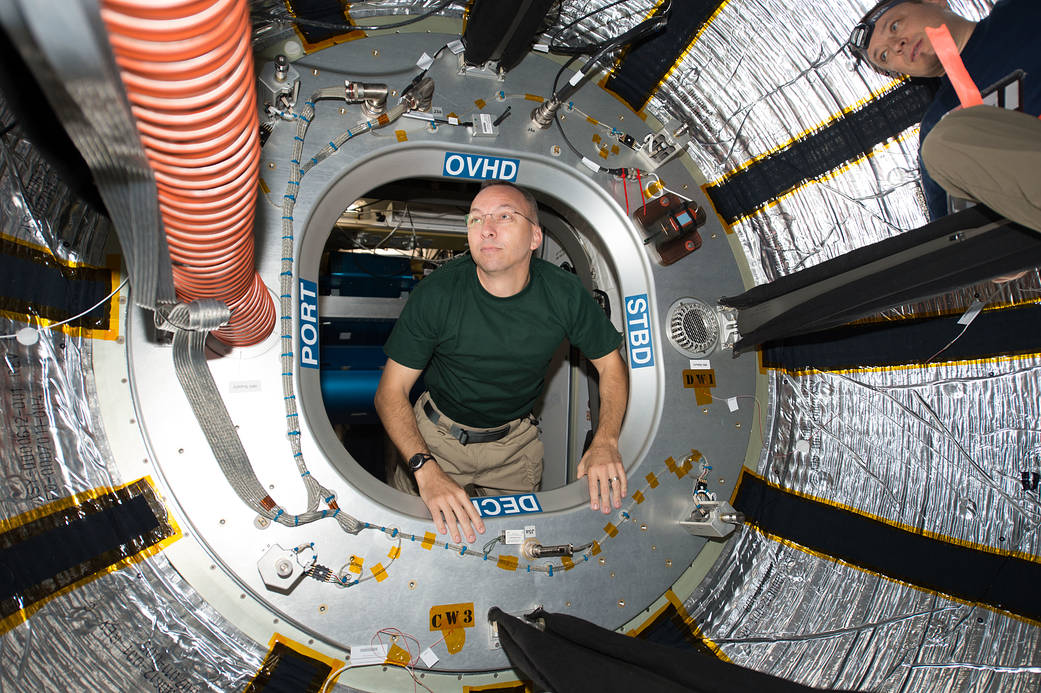
NASA astronaut Randy Bresnik looks through the hatch of the International Space Station’s Bigelow Expandable Aerospace Module (BEAM) on July 31, 2017. He shared this photo on social media on August 2, commenting, “Ever wonder how you look when you enter a new part of a spacecraft? Well, this is it. First time inside the expandable BEAM module.”
The BEAM is an experimental expandable module launched to the station aboard SpaceX’s eighth commercial resupply mission on April 8, 2016, and fully expanded and pressurized on May 28. Expandable modules weigh less and take up less room on a rocket than a traditional module, while allowing additional space for living and working. They provide protection from solar and cosmic radiation, space debris, and other contaminants. Crews traveling to the moon, Mars, asteroids, or other destinations may be able to use them as habitable structures.
The BEAM is just over halfway into its planned two-year demonstration on the space station. NASA and Bigelow are currently focusing on measuring radiation dosage inside the BEAM. Using two active Radiation Environment Monitors (REM) inside the module, researchers at NASA’s Johnson Space Center in Houston are able to take real-time measurements of radiation levels.
Image Credit: NASA

























